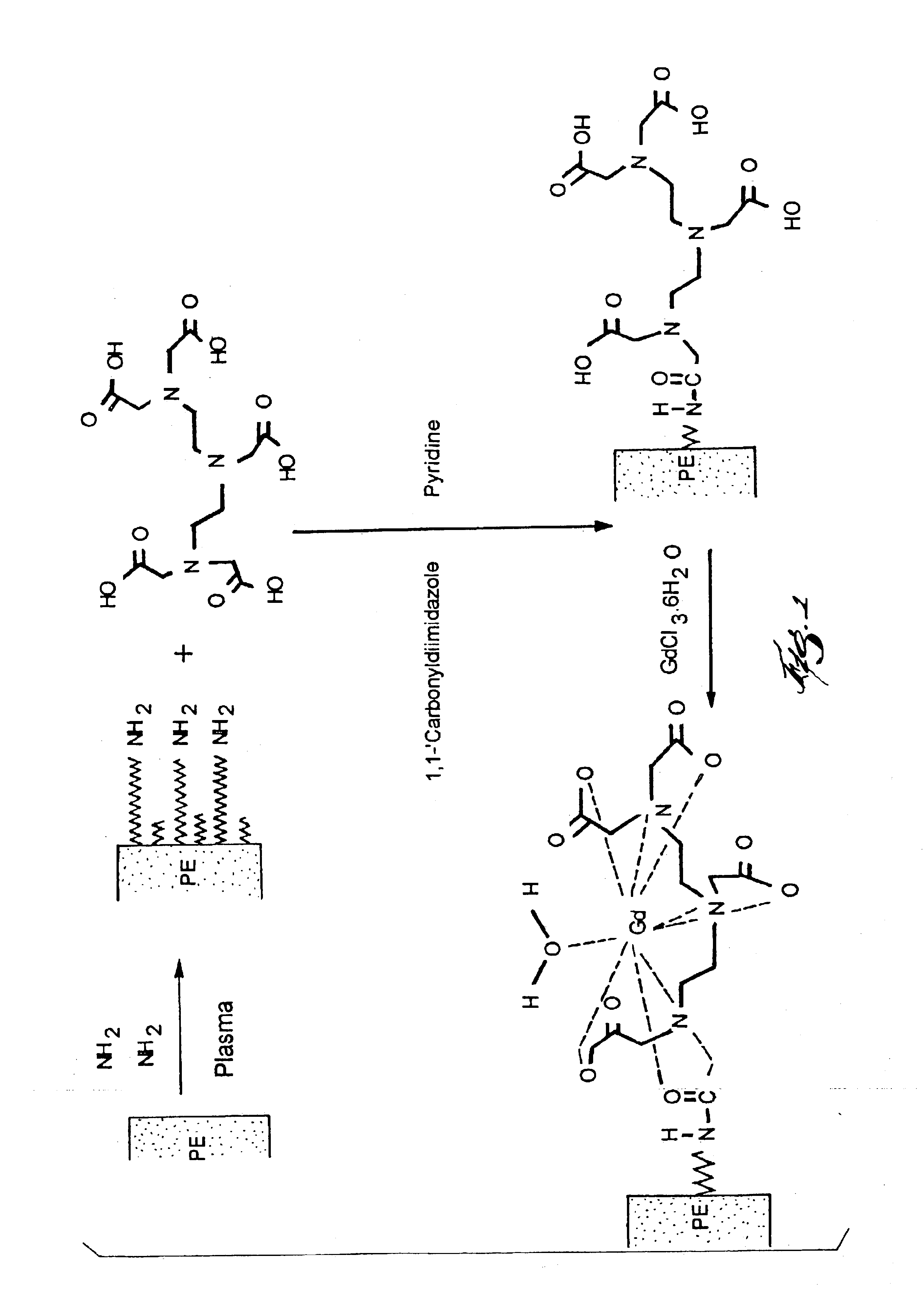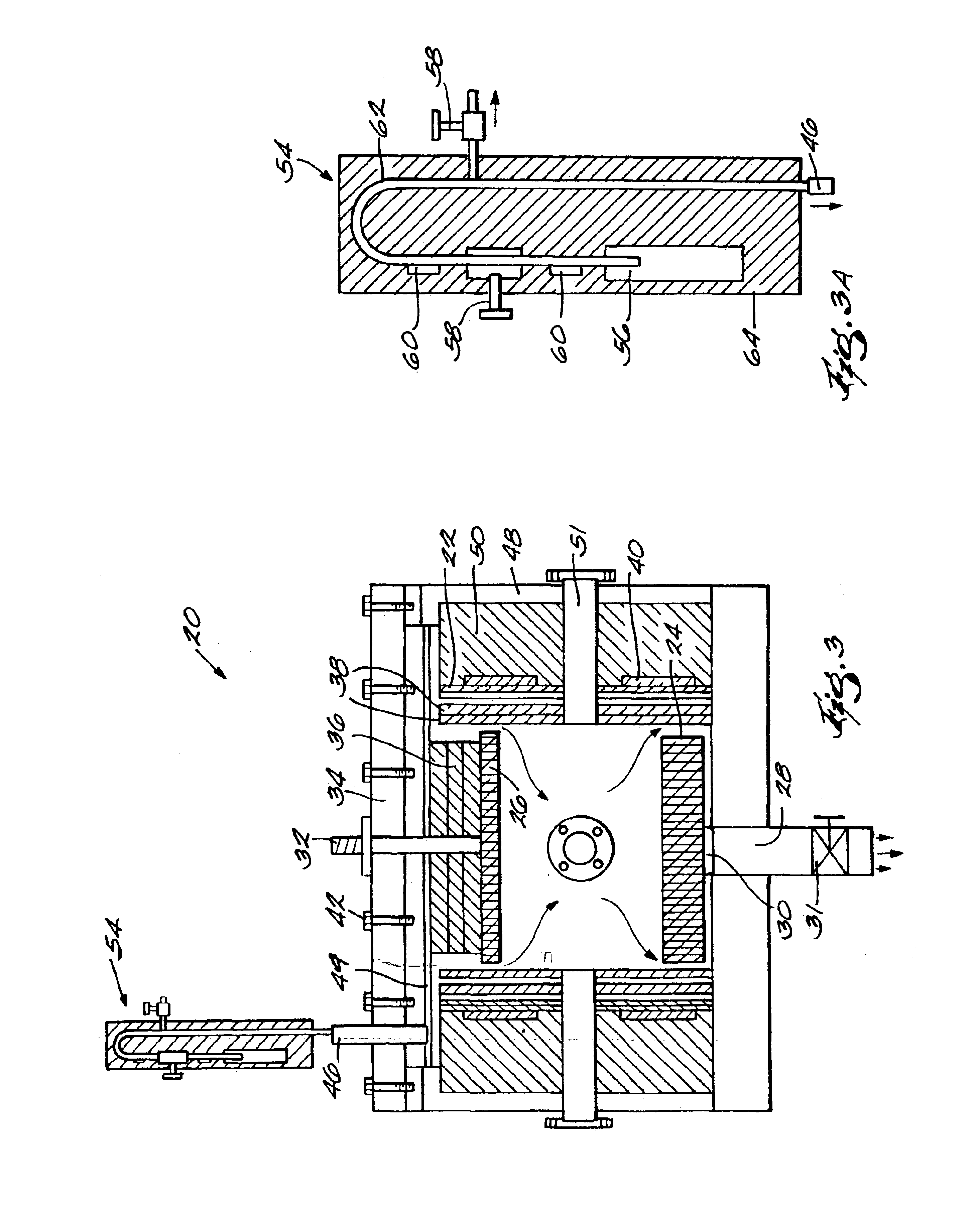MR signal-emitting coatings
a signal-emitting coating and signal technology, applied in the field of coatings, can solve the problems of large doses of ionizing radiation required, difficult to determine position at more than a few discrete points along the device, and difficult to achieve the effect of high signal, easy visualization, and convenient visualization
- Summary
- Abstract
- Description
- Claims
- Application Information
AI Technical Summary
Benefits of technology
Problems solved by technology
Method used
Image
Examples
example 1
Preparation of Coated Polyethylene Sheets
[0053]Polyethylene sheets were coated in the three-step process described herein.
[0054]Surface Amination.
[0055]A polyethylene sheet (4.5 in diameter and 1 mil thick) was placed in a capacitively coupled, 50 kHz, stainless steel plasma reactor (as shown schematically in FIGS. 3 and 3A) and hydrazine plasma treatment of the polyethylene film was performed. The substrate film was placed on the lower electrode. First, the base pressure was established in the reactor. Then, the hydrazine pressure was slowly raised by opening the valve to the liquid hydrazine reservoir. The following plasma conditions were used: base pressure=60 mT; treatment hydrazine pressure=350 mT; RF Power=25 W; treatment time=5 min; source temperature (hydrazine reservoir)=60° C.; temperature of substrate=40° C. Surface atomic composition of untreated and plasma-treated surfaces were evaluated using XPS (Perkin-Elmer Phi-5400; 300 W power; Mg source; 15 kV; 45° angle).
[0056]D...
example 2
Preparation of Coated Polyethylene Sheets Including Linker Agent
[0062]Coated polyethylene sheets are prepared according to the method of Example 1, except that after surface amination, the polyethylene sheet is reacted with a lactam, and the sheet washed before proceeding to the chelation step. The surface of the film is checked for amine groups using XPS.
example 3
Imaging of Coated Polyethylene and Polypropylene Sheets
[0063]MR signal enhancement was assessed by imaging coated sheets of polyethylene and polypropylene, prepared as described in Example 1, with gradient-recalled echo (GRE) and spin-echo (SE) techniques on a clinical 1.5 T scanner. The sheets were held stationary in a beaker filled with a tissue-mimic, yogurt, and the contrast-enhancement of the coating was calculated by normalizing the signal near the sheet by the yogurt signal. The T1-weighed GRE and SE MR images showed signal enhancement near the coated polymer sheet. The T1 estimates near the coated surface and in the yogurt were 0.4 s and 1.1 s, respectively. No enhancement was observed near control sheets. The MR images acquired are shown in FIG. 4.
PUM
| Property | Measurement | Unit |
|---|---|---|
| diameter | aaaaa | aaaaa |
| thick | aaaaa | aaaaa |
| thick | aaaaa | aaaaa |
Abstract
Description
Claims
Application Information
 Login to View More
Login to View More - R&D
- Intellectual Property
- Life Sciences
- Materials
- Tech Scout
- Unparalleled Data Quality
- Higher Quality Content
- 60% Fewer Hallucinations
Browse by: Latest US Patents, China's latest patents, Technical Efficacy Thesaurus, Application Domain, Technology Topic, Popular Technical Reports.
© 2025 PatSnap. All rights reserved.Legal|Privacy policy|Modern Slavery Act Transparency Statement|Sitemap|About US| Contact US: help@patsnap.com



